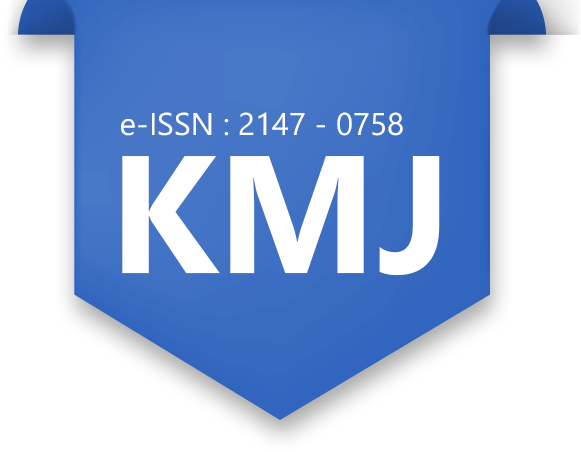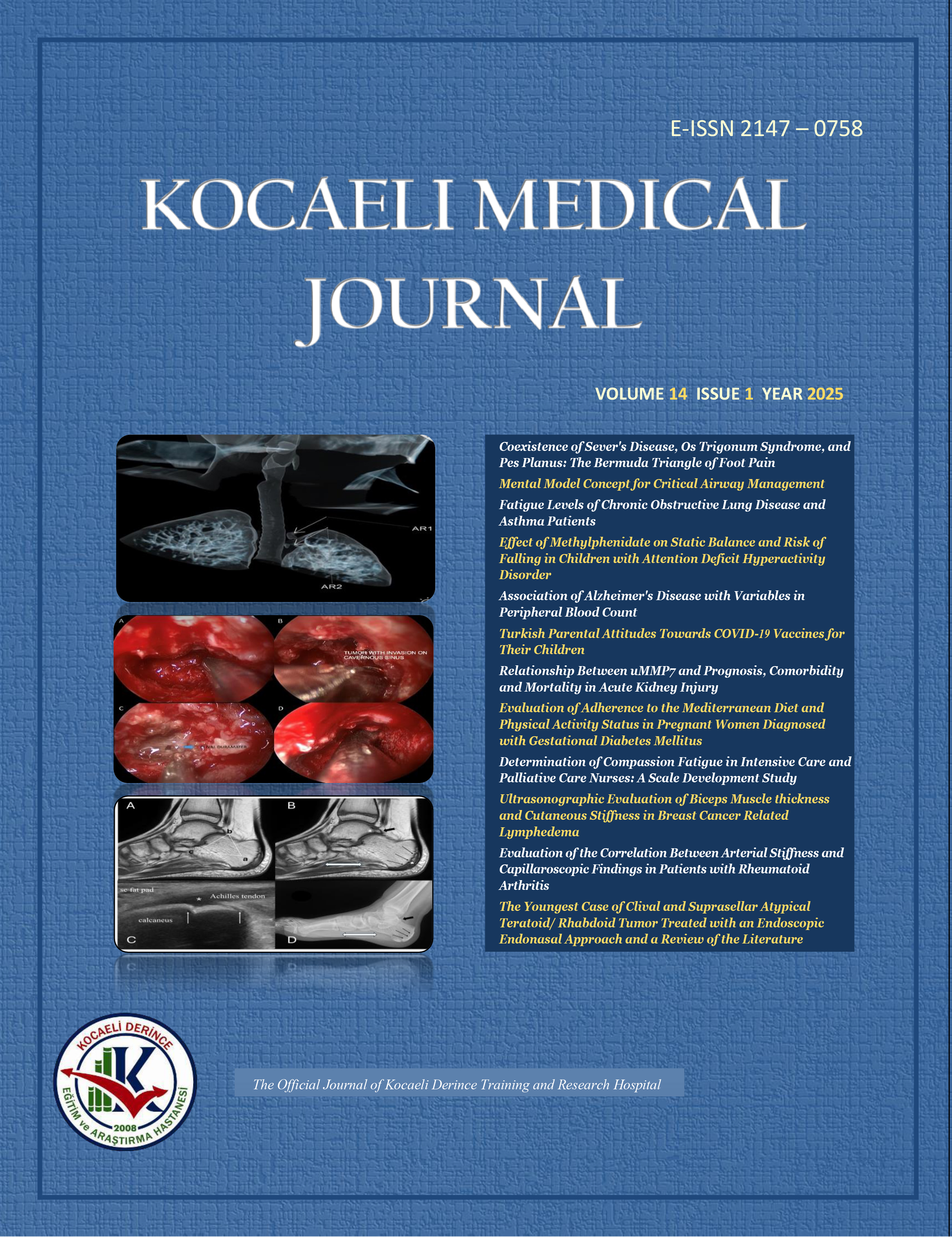
Comparıson Of Shoulder Hemiarthroplasty and Plate Osteosynthesıs On Shoulder and Hand Functıonalıty In Patıents Wıth Proxımal Humerus Fractures
Ali Çağdaş Yörükoğlu1, Nihal Büker2, Gökhan Bayrak2, Raziye Şavkın2, Nusret Ök1, Mehmet Yalçın1, Serkan Şahin21Pamukkale University, Faculty Of Medicine, Department Of Orthopedics And Traumatology, Denizli, Turkey.2Pamukkale University,school Of Physıcal Theraphy And Rehabilitation, Denizli, Turkey
INTRODUCTION: This study was planned to retrospectively compare the effect of shoulder hemiarthroplasty and plate osteosynthesis on shoulder and hand functionality in patients with proximal humerus fracture.
METHODS: From 2014 to 2019, patients with Neer III proximal humerus fractures were retrospectively reviewed. Among them, 13 patients underwent shoulder hemiarthroplasty (7 males and 6 females with an average age of 66.08±12.99 years old); while 13 patients underwent osteosynthesis(4 males and 9 females with an average age of 54.67±20.05 years old). Hand and shoulder functionality were evaluated with Disabilities of the Arm, Shoulder and Hand (DASH-T) Score, modified Constant-Murley score (CMS), Duruöz Hand Index (DHI) and Michigan Hand Outcomes Questionnaire (MHQ) and Jamar hand-held dynamometer. Additionally, surgery satisfaction of the patients were determined.
RESULTS: There was no statistically significant difference in DASH-T score (p=0.769), DHI total score (0.222), hand grip strength (p=0.268) and surgery satisfaction (p=0.899) between the groups. There was a significant difference in modified CMS score in favor of osteosynthesis group (p=0.008). There was no statistically significant difference in work performance sub-scale of MHQ (p=0.135) whereas a significant difference was observed in bilateral activities of daily living task (p=0.006) and pain (p=0.010) the sub-scales of MHQ in favor of osteosynthesis group.
DISCUSSION AND CONCLUSION: In the osteosynthesis group, it was found that the shoulder functions and bilateral activities of daily living task were better than the hemiarthroplasty group. Also the perceived pain in the hemiarthroplasty group was higher. Further studies with large sample size are needed to confirm the existence of differences between these surgical techniques.
Neer Tip 3 Proksimal Humerus Kırıklarında Hemiartroplasti ve Osteosentezin Omuz ve El Fonksiyonelliği Üzerine Etkilerinin Karşılaştırılması
Ali Çağdaş Yörükoğlu1, Nihal Büker2, Gökhan Bayrak2, Raziye Şavkın2, Nusret Ök1, Mehmet Yalçın1, Serkan Şahin21Pamukkale Üniversitesi Tıp Fakültesi, Ortopedi Ve Travmatoloji Anabilim Dalı, Denizli, Türkiye.2Pamukkale Üniversitesi, Fizik Tedavi Ve Rehabilitasyon Yüksekokulu, Denizli, Türkiye.
GİRİŞ ve AMAÇ: Bu çalışma, proksimal humerus kırığı olan hastalarda omuz hemiartroplastisi ve plak osteosentezinin omuz ve el fonksiyonlarına etkisini retrospektif olarak karşılaştırmak için planlanmıştır.
YÖNTEM ve GEREÇLER: 2014-2019 yıları arasında Neer tip III proksimal humerus kırığı nedeniyle, parsiyel omuz artroplastisi (yaş ortalaması 66.08 ± 12.99 yıl olan 7 erkek, 6 kadın) ve plak osteosentezi (yaş ortalaması 54.67 ± 20.05 yıl olan 4 erkek, 9 kadın) uygulanan toplam 26 hasta çalışmaya dahil edildi. Üst ekstremite fonksiyonelliği Kol-Omuz ve El Sorunları Anketi Türkçe Versiyonu (DASH-T), omuz fonksiyonelliği Modifiye Constant Murley skoru (MCMS), el fonksiyonelliği Michigan El Sonuç Anketi (MESA) ve Duruöz El İndeksi (DEİ) kullanılarak değerlendirildi. Hastaların kaba kavrama kuvveti Jamar el dinamometresi ile ölçüldü.
BULGULAR: Gruplar arasında DASH-T skoru (p = 0.769), DHI toplam skoru (0.222), el kavrama gücü (p = 0.268) ve cerrahi memnuniyet grupları (p = 0.899) açısından istatistiksel olarak anlamlı fark yoktu. Modifiye CMS skorunda osteosentez grubu lehine anlamlı fark vardı (p = 0,008). MHQ'nun iş performansı alt ölçeğinde istatistiksel olarak anlamlı bir fark bulunmazken (p = 0,135), MHQ'nun bilateral günlük yaşam görevi aktiviteleri (p = 0,006) ve ağrı (p = 0,010) alt ölçeklerinde osteosentez grubu lehine anlamlı farklılık gözlenmiştir.
TARTIŞMA ve SONUÇ: Osteosentez grubundaki hastaların omuz eklem hareket açıklıkları ve omuz eklem fonksiyonellikleri daha iyi düzeydeydi ve her iki elin kullanıldığı günlük yaşam aktivitelerini gerçekleştirmede daha başarılıydılar. Ayrıca hemiartroplasti grubunda algılanan ağrı daha yüksekti. Bu cerrahi teknikler arasındaki farklılıkların varlığını doğrulamak için geniş örneklem büyüklüğüne sahip daha fazla çalışmaya ihtiyaç olduğu kanısındayız.
Manuscript Language: Turkish












